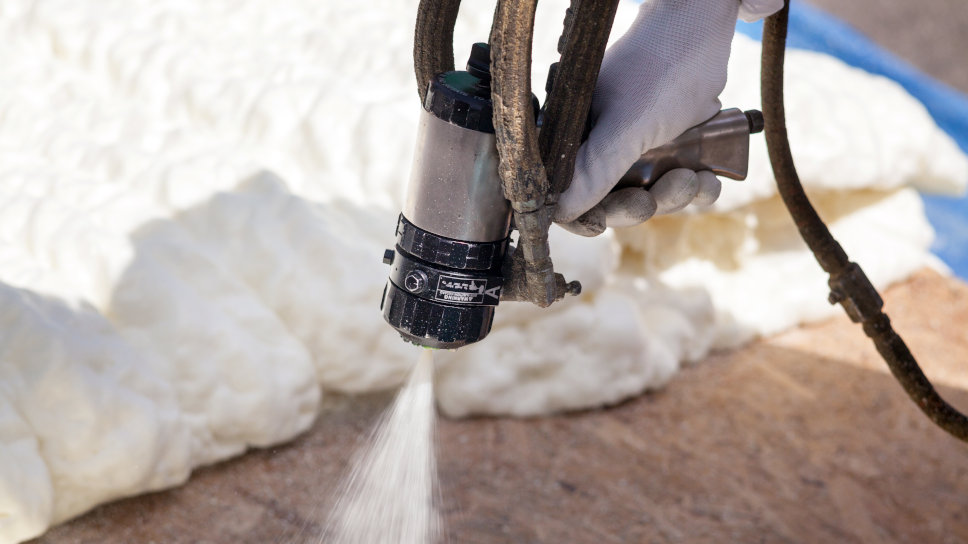Can PUR foam be applied to any surface?
Until recently, the nature of building required the use of a specific type of material to insulate the surface. This often entailed extension of working time and increase in service price. Currently, polyurethane foamis a common solution on the construction market. The properties of this thermal insulation material allow us to state that it is one of the most adhesive insulation materials.
The polyurethane foam, e.g. Purios H, may be sprayed on many popular surfaces, without any additional preparation of the substrate. The right type of foam can be used to insulate foundations, walls, roofs and attics. It forms a uniform layer that tightly penetrates all corners and perfectly adheres to the surface. It is a durable thermal and acoustic insulation, which protects the house against heat escape for a long time.
How to increase polyurethane foam adhesion?
Among the properties of PUR foam is its excellent adhesion to most building materials. However, there are certain aspects that you can implement to improve it. So how can the adhesion of PUR foam be increased?
The most important issue is the proper preparation of the substrate, which does not always meet the basic requirements. PUR foam spraying should be carried out on a consistent, dry substrate. If there is rust, dirt, sand or other easily detachable elements on the surface, the foam will adhere only to the weakest, easily detachable layer.
The parameters of PUR foam allow for its application on clean and sandy mortar. To improve the effect, it is worth covering the layer with quality mortar. This process will increase surface cohesion and protect the substrate against polyurethane foam detachment resulting from its natural tensions.
PUR spray on smooth materials requires adequate preparations as well. The surface should be thoroughly cleaned and degreased with mineral spirits and the primer should be treated with an anti-corrosion agent. In the case of unprotected asphalt, it is advisable to check its fastening to the surface and take care to remove the non-sticky polyethylene layer with a burner. If you are dealing with a layer of old, damaged polyurethane foam, clean the surface, e.g. with a wire brush or other mechanical device.
In the case of foam spraying of steelhalls, warehouses or agricultural stock rooms, the application itself will also not be a problem. If the hall is made of galvanised sheet metal, before the foam is applied, special preparations must be used which will cause adhesion between the foam and the galvanised sheet metal. If the metal sheet is several years old, such preparations are no longer necessary.
What surfaces is PUR foam not applied to?
Polyurethane foam adhesion reaches its highest level when the thermal insulator is applied to a consistent, clean and dry substrate. Therefore, the foam should not be applied to a dirty and damp surface or a place covered with surface condensation. Very low porosity surfaces can also be problematic. Application of polyurethane foam in such cases will not make any sense. In case of certain plastics, e.g. Teflon or polypropylene, their lack of adhesion means that even highly adhesive thermal insulation materials will not stick.

 This website uses cookies. By using this website, you consent to the use of cookies in accordance with your browser settings.
This website uses cookies. By using this website, you consent to the use of cookies in accordance with your browser settings.